Puyo Puyo Chronicle Monster Names
You might’ve noticed some of the monster names in our translated menu previews – for fun, here’s what each name comes from. We had some help with these from Momochi, who you might know as a native Japanese speaker who also translates Puyo content.
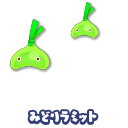
Rammit (ラミット ; Ramitto): Our best guess for this is that it’s a twist on the English word “rabbit” (ラビット ; rabitto) due to the fact that its tags look like rabbit ears and that it hops.
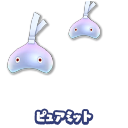
Purammit (ピュアミット ; Pyuamitto): Combination of the English word “Pure” (ピュア ; pyua) and Rammit. It actually omits the “ra” of rammit in this case, so we merged the words.

Hamushter (ハムタス ; Hamutasu): This is simply the English word for “hamster” (ハムスター ; hamusutaa) with the last two sounds swapped (suta -> tasu).
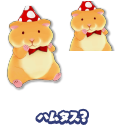
Hamushter? (ハムタス? ; Hamutasu?): Since this hamster is apparently a dubious hamster for trading the mushroom cap for a party hat, we decided it would be funniest to combine Hamster + Mushroom for this species, so that the identity of this party hamster is called more into question.
)
Wheeloo (ウィルウ ; Wiruu): It sounds like English for “wheel” (ホイール ; hoiiru) while using the special katakana combination for “w” (ウィ). It also swapped the long vowel to the end.
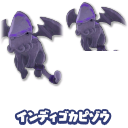
Capygoyle (カピゾウ ; Kapizou): Believe it or not, this comes from “capybara” (カピバラ ; kapibara) + “stone statue” (石像 ; sekizou). We’ve combined capybara and gargoyle. Thank you Tetsutarou for catching this one.

Capystav (カピスタフ ; Kapisutafu): This follows a similar format as the previous, just with the foreign name suffix “stav” (sutafu).

Magey (メーチャン ; Meechan): Combination of the English word “mage” (メイジ ; meiji) with the feminine suffix “chan”. We used “-y” to symbolize the cutesy suffix.
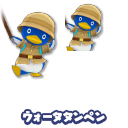
Expediguin (タンペン ; Tanpen): Combination of the Japanese word for exploration/expedition (探検 ; tanken) and the English word “penguin” (ペンギン ; pengin). As a result we merged “expedition” and “penguin” to make “Expediguin”.
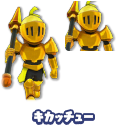
Solarmor / Cinnarmor / Aquarmor / Verdarmor / Lavendarmor (カッチュー ; Kacchuu): The Japanese word 甲冑 (kacchuu) means “armor and helmet”. Puyo Chronicle also abbreviates the color names or merges it with “kacchuu” – the red armor, for instance, is called アカッチュー (Akacchuu), which is a combination of red (Aka) and “kacchuu”. Since they both share “ka”, it isn’t repeated twice. The green armor is called ミドカッチュー (Midokacchuu), which is a combination of green (Midori) and “kacchuu”, but dropping the “ri” of the “midori”. To mimic this in English we picked color words to merge with “armor”.
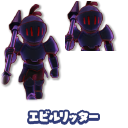
Evil Ritter (エビルリッター ; Ebiru Rittaa): For some reason, this armor is German. The Japanese is just a transliteration of the English word “Evil” + ritter so we basically just re-romanized it.

Fortle (フォートル ; Footoru): Combination of the English word “Fort” (フォート ; footo) and the English word “Turtle” (タートル ; taatoru).
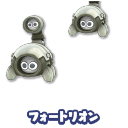
Forturion (フォートリオン ; Footorion): A robotic Fortle with the robotic sounding ending “-rion”.

Woodtle (ウッドル ; Uddoru): Combination of the English word “Wood” (ウッド ; uddo) and “Turtle” (タートル ; taatoru).
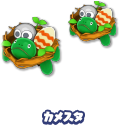
Turtster (カメスタ ; Kamesuta): The “kame” is very clearly the Japanese word for turtle, but we’re unsure what the “suta” is. Momochi suggested either English “Nest” (ネスト ; nesuto) or “Easter” (イースター ; iisutaa).
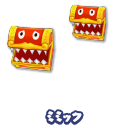
Mimic (ミミック ; Mimikku): A typical RPG monster, it’s just “Mimic” written in Katakana.
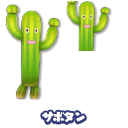
Cactup (サボタン ; Sabotan): Combination of the Japanese word for cactus (さぼてん ; saboten) and either the cutesy suffix “-tan” or possibly the English word “button” (ボタン ; botan) since they pop up out of the ground and chase after you. Our translation is a combination of “cactus” and “up”. It also carries the bonus of sounding like “act up”, since these creatures certainly are acting up by running around on two feet when they’re supposed to be rooted to the ground.
